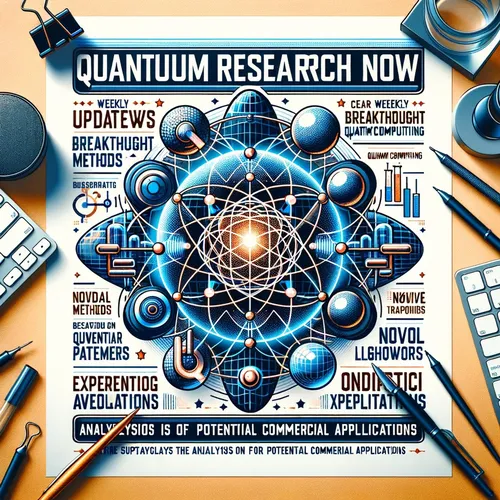QCi's Photonic Chip Contract: Quantum Leaps in Secure Computing | Quantum Research Now
- Author
- Quiet. Please
- Published
- Wed 06 Aug 2025
- Episode Link
- https://www.spreaker.com/episode/qci-s-photonic-chip-contract-quantum-leaps-in-secure-computing-quantum-research-now--67272122
This is your Quantum Research Now podcast.
Just imagine: a quiet red glow at dawn, the crisp hum of lasers slicing through vacuum in a sealed glass chamber—and today, beyond that, the world of quantum computing feels as electrifying as those first rays. I’m Leo, your Learning Enhanced Operator, and you’re listening to Quantum Research Now. I’m skipping the small talk, because today—August 6th—Quantum Computing Inc., also known as QCi, has stormed headlines with a landmark contract awarded by the U.S. Department of Commerce’s National Institute of Standards and Technology.
For years, photonics—or light-based quantum systems—have been the whisper on every quantum physicist’s lips, often overshadowed by superconducting qubits or trapped ions. QCi’s breakthrough? They’ve secured a government contract to design and fabricate thin-film lithium niobate photonic circuits—try saying that three times fast! But, in plain terms, they’re building the ultra-precise “roadways” that let quantum light signals zip around chips with minimal loss. In quantum computing, every photon counts: lose one, and you risk scrambling your calculation. This contract isn’t just a badge of honor—it’s a critical step toward U.S.-based, ultra-fast, ultra-secure photonic quantum machines.
So, what makes this announcement so momentous? Imagine the internet as a busy highway of cars, where every car is a bit of information. Traditional computing is like toll booths: cars stop, pay, move on—inefficiencies everywhere. Quantum photonics? It's a maglev train: no stops, minimal friction, pure speed. By winning this contract, QCi is helping America upgrade its information railways, right at the hardware level.
And quantum news is coming fast and furious. This past weekend alone, my inbox exploded as QCi’s stocks jumped alongside reports of their quantum encryption tools being adopted by major banks. Meanwhile, D-Wave is scaling out its Advantage2 processor for quantum-AI hybrid computing, and researchers at CERN used an antiproton as a qubit for a record-shattering minute—true quantum theater!
But what really sends shivers down my spine is how these advances touch real life. Take QCi’s photonic chips: these circuits may eventually power the cryptography to secure your bank account, safeguard medical records—even shield government secrets—all with the mathematics of entangled light and wave interference.
I think of my own lab—sweet-smelling solder, dust motes swirling in sunrise beams, the hiss of cooling helium. Each new chip that slides onto a mount is another step beyond binary—the ghostly “maybe” of superposition harnessed for humankind.
So, to all listeners: quantum leaps start with single steps, and every day, those steps are getting bigger. If you have questions or want a topic explored on air, email me—[email protected]. And don’t forget to subscribe to Quantum Research Now so you never miss the next big shift. This has been a Quiet Please Production. For more, check out quietplease.ai. Thank you for letting me bring a little quantum drama to your day.
For more http://www.quietplease.ai
Get the best deals https://amzn.to/3ODvOta
